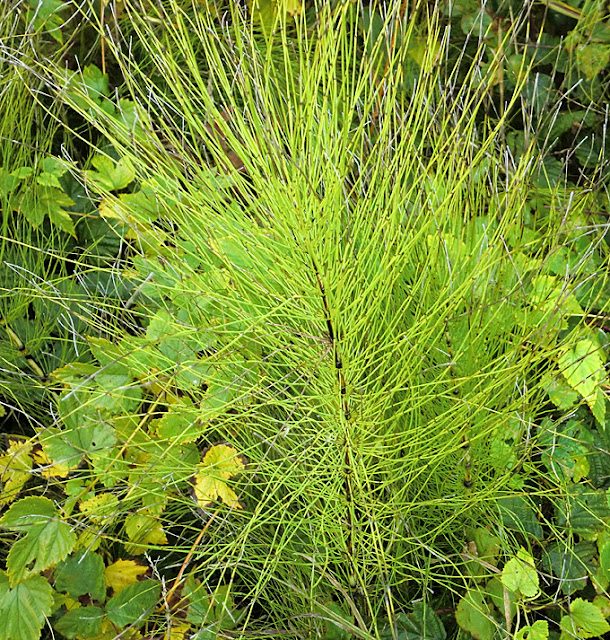Family: Equisetaceae
common name: horsetail, field horsetail
ETYMOLOGY: The generic name is a contraction of two Latin words equus (horse) and Saeta (nap), for the appearance of ramuli long and very thin, like horse hair. The specific attribute Latin arvense (field) indicates the preferred habitat of this plant
the field horsetail is a perennial herb very characteristic, commonly known as 'horsetail' because of its characteristic appearance. Belongs to the systematic group of ferns, ancient and primitive vascular plants, which reproduce by means of the flowers (thus belong to the vascular cryptogams) but through the abundant production of spores. The shells can be of two types: vegetative or reproductive. The vegetative stems, up to 50 cm high, barren (no spores) and equipped with cloropasti, green, typically striped with darker streaks, have scaly leaves verticillate welded stem as a collar and branch out from a creeping underground rhizome. The multiplication is provided by spores released from a second type of shell, fertile, high up to 20 inches, grayish-free because of chlorophyll, which appears at the base of the plant in spring and is free cloropasti with a strobila the top. After the fall of the spores strobila disappears and becomes fertile stem similar to sterile.
this fern is spread throughout the world except in Oceania and prefers moist soil, multiplying freely along ditches and streams, even at high altitudes, sometimes tending to become a pest.
has a pharmacological and clinical use, because, in addition to the action diuretic and hemostatic known since ancient times, joins an important role in hematopoietic and mineralize. Just for the composition and its properties, the horsetail is also known as 'clay plant'
has a pharmacological and clinical use, because, in addition to the action diuretic and hemostatic known since ancient times, joins an important role in hematopoietic and mineralize. Just for the composition and its properties, the horsetail is also known as 'clay plant'





0 comments:
Post a Comment